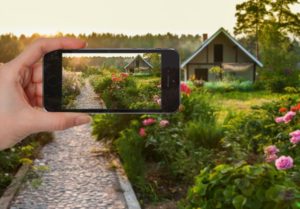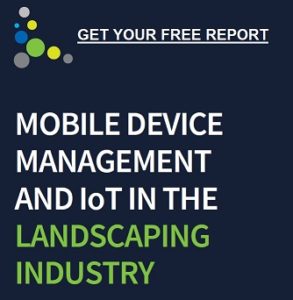Mobility is the Path to the Future in the Landscaping Industry
 The landscaping industry has been going through a boom of its own over the past decade. Data shows that the industry has steadily grown at a rate of 4.8% in the past five years and currently generates an annual revenue of $82 billion. A strong housing market has encouraged the home owners to invest in home improvement projects and landscaping projects that add value to the property. This trend has created a high demand for the services of the 500,000+ businesses in this industry.
The landscaping industry has been going through a boom of its own over the past decade. Data shows that the industry has steadily grown at a rate of 4.8% in the past five years and currently generates an annual revenue of $82 billion. A strong housing market has encouraged the home owners to invest in home improvement projects and landscaping projects that add value to the property. This trend has created a high demand for the services of the 500,000+ businesses in this industry.
The landscaping services include mowing, cutting, garden engineering and maintenance, and landscape designing, among others. The landscaping businesses cater to both residential as well as commercial establishments. For obvious reasons, people management and machine management are a big part of any landscaping project. Like any other industry, businesses in this space can also take advantage of the revolution in mobile technology and create a competitive advantage for themselves. In fact, mobility is the future of the landscaping industry. Here’s the what, why, and how of it.
Smaller Workforce Requires Better Tools
 Landscape industry faces a significant shortage of skilled employees. According to a study by Lawn & Landscape, 2014 saw the demand for skilled workers grow in the landscape industry. This can be attributed to the increase in demand for such services, but also to the lack of full time professionals who enter the field. Leveraging technology to improve productivity of the available workforce then remains to be the only solution for the companies.
Landscape industry faces a significant shortage of skilled employees. According to a study by Lawn & Landscape, 2014 saw the demand for skilled workers grow in the landscape industry. This can be attributed to the increase in demand for such services, but also to the lack of full time professionals who enter the field. Leveraging technology to improve productivity of the available workforce then remains to be the only solution for the companies.
More and more landscaping businesses are using connected devices to visualize, track, and manage all their human resources and machinery. The available apps allow the users to allocate various tasks to different workers and utilize their time in the most judicious manner. This way, the businesses are able to accept large projects and complete them in record times more efficiently. They can not only assign the resources, but also see them working in real time. Thus, they are able to manage their projects and tasks better, even with a small crew.
Smart Operations
When the landscapers are involved in large construction projects, they can use apps on their devices to remotely operate their equipment. This is a quantum leap in terms of workforce safety, when they are working in a hazardous terrain. Workers can also make use of wearable technology like smart glasses, smart helmets, and smart vests to access safety manuals and emergency guidelines, or to contact support for any kind of help. This makes the project site more secure, minimizes downtime, and maximizes efficiency.
Save Water Without Compromising on Beauty
With global warming on the rise, water scarcity has become a more real and grim concern. This new reality includes the US too, which is suffering from a water crisis of its own. The severity of this situation is more palpable in the southern and western parts of the country. There is mounting pressure on industries like landscaping to minimize their water usage. From maintaining a garden to growing new hedges, everything requires copious amounts of water.
In the midst of this crisis situation, the industry has found its savior in the IoT devices.
Technology has made it possible for businesses to determine the exact amount of water a particular grass or soil requires to thrive. Applications can use their databases to determine the best time of the day or the week to water the gardens and flower beds. They can also use weather data to accurately determine if the region might get rainfall. If a downpour is expected, the sprinklers do not need to be used.
Cameras and sensors can differentiate between the areas of property that require sprinkling and those that do not. In additional, the user can be automatically alerted to any leakage in sprinklers or other garden equipment that might be causing water leakage. This saves unnecessary overuse of water.
Arming Landscapers With Digital Pest Control
No, there is no software to keep the pests away. However, there are applications that can help keep away the weeds and other invasions on the garden. Apps can notify the landscapers about the best times to spray pesticides and insecticides. Installed cameras can detect the growth of weeds in the garden and alert the landscapers about it.
Then there are the animal invasions. Cameras can detect such uninvited guests and warn the users or landscapers about them. The systems today are sophisticated enough to differentiate between household pets and other animals. As soon as the system determines that the animal is an intruder, it can play sounds that scare it away or release scents that irritate the animal. Modern systems are capable of driving away the pests in a humane way without hurting them.
Unimaginable Customizations
IoT devices make it possible for you to know when the grass in the garden has overgrown to the point that it needs a cut. That’s right! A landscaper can punch in the optimum design of the garden in their system. This includes the length of the grass, the shape of the beds, and so on. The sensors will notify the landscapers whenever a trim is required. This saves a lot of time and money for the landscaper, who does not have to schedule an appointment until it is truly needed.
Repairs, Replenishment, & Maintenance
All the machinery and supplies on a “smart site” can be tracked and monitored in real time. Landscapers get a complete 360-degree view of their operations – which equipment is due for maintenance, whether the supplies at a site are under critical level, and so on. In fact, the system can monitor such information and notify the company when something requires their attention. Thus, the workers never have to sit around and wait to do their job. When they reach the job, all the systems will be locked and ready to go. This is a huge money saver for any company.
Closing Thoughts
These developments are not futuristic. All of this and more is happening right now. Businesses are using computer models, augmented reality, and smart devices to make their operations smoother, faster, and more efficient. And, mobility is paving the way. Businesses who walk it will become the leaders of tomorrow. Those who don’t will just have to step aside for the leaders to get ahead.